
Flower chafers are a group of scarab beetles comprising the subfamily Cetoniinae. Many species are diurnal and visit flowers for pollen and nectar, or to browse on the petals. Some species also feed on fruit. The group is also called fruit and flower chafers, flower beetles and flower scarabs. There are around 4,000 species, many of them still undescribed.

The pygora beetles or flower beetles are scarab beetles of the genus Pygora. They are native to Madagascar.
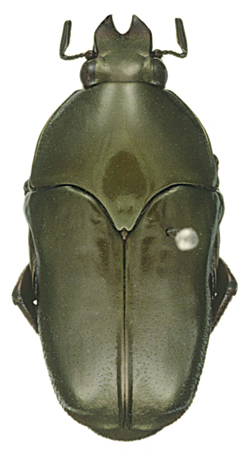
Ischiopsopha are beetles from the subfamily Cetoniinae, tribe Schizorhinini. The genus was created by Raffaello Gestro in 1874. The type species of the genus is Cetonia bifasciata Quoy & Gaimard, 1824. These cetoniids have only the tip of the scutellum visible. The genus is widespread throughout the whole Australian region.

Pachnoda is a genus of beetles from the subfamily Cetoniinae with nearly all of the species living in Africa. The limit of the genus is given by the presence of internal lobes in their aedeagi.

Lomaptera are beetles from the subfamily Cetoniinae, tribe Schizorhinini. The genus was created by Gory & Percheron, in 1833. The type species of the genus is Cetonia papua Guérin-Méneville, 1830. These cetoniids have the tip of the scutellum invisible, which makes the difference with the genus Ischiopsopha.

Lampetis is a genus of beetles in the family Buprestidae, containing the following species:
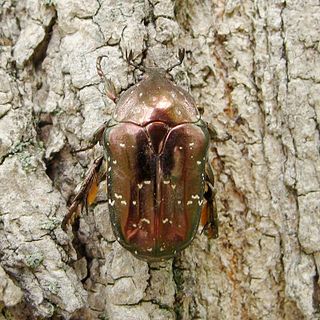
Protaetia is a genus of beetles of the family Scarabaeidae, occurring primarily in Asia, and containing over 300 species.

Gnathocera is a genus of beetles belonging to the family Scarabaeidae.
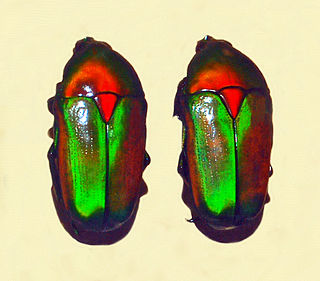
Chlorocala is a genus of beetles belonging to the family Scarabaeidae.

Euselates is a genus of beetle belonging to the family Scarabaeidae and tribe Taenioderini.

Cotinis is a genus of scarab beetles in the subfamily Cetoniinae found throughout North and South America. At least two species are common pests. The genus was erected by Hermann Burmeister in 1842.

Clinteria is a genus of scarab beetles in the subfamily Cetoniinae found in Asia. The genus is characterized by the scutellum fused with the pronotum.
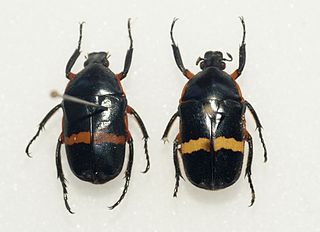
Chondrorrhina is a genus of fruit and flower chafers belonging to the family Scarabaeidae, subfamily Cetoniinae, found in Africa.
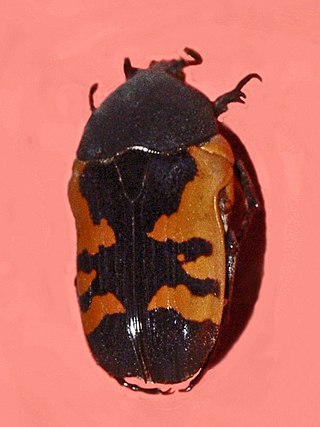
Polybaphes is a genus of fruit and flower chafers belonging to the family Scarabaeidae, subfamily Cetoniinae.

Chalcothea is a genus of flower chafers belonging to the family of scarab beetles in tribe Taenioderini.

Xeloma are beetles from the subfamily Cetoniinae, tribe Cetoniini. The genus contains thirteen recognised species found in various countries of Sub-Saharan Africa.
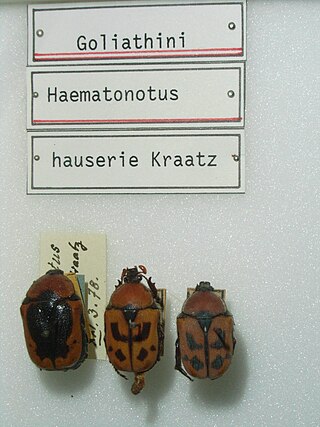
Rhinocoeta is a genus of colorful beetles belonging to the subfamily Cetoniinae, family Scarabaeidae.

Cetoniini is a tribe of fruit and flower chafers in the family of beetles known as Scarabaeidae. There are over 80 genera in Cetoniini, found worldwide.
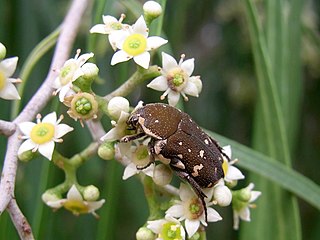
Glycyphana is a genus of beetles in the family Scarabaeidae. There are at least 110 described species in Glycyphana, found in Asia, Australia, and the Pacific Islands.

Campsiura is a genus of beetles in the scarab beetle family Scarabaeidae. There are more than 30 described species in Campsiura, found in Africa and Asia.




















